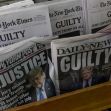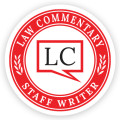The long-running legal saga between former Alaska Governor Sarah Palin and The New York Times returns to federal court this week, as a retrial begins in a defamation case that has grown into a litmus test for the First Amendment in an era of widespread distrust in the media.
Originally filed in 2017, Palin’s lawsuit accuses The Times and its former opinion editor, James Bennet, of defaming her in an editorial that linked her political action committee to a 2011 mass shooting in Tucson, Arizona. Although a jury ruled in favor of the newspaper during the initial 2022 trial, that verdict was overshadowed by U.S. District Judge Jed Rakoff’s announcement—made while the jury was still deliberating—that he intended to dismiss the case for lack of evidence of actual malice, the standard required for defamation claims by public figures.
The Second Circuit Court of Appeals later overturned the ruling, finding that Rakoff’s mid-deliberation disclosure was improper and warranted a new trial. With opening statements scheduled this week, the case once again places questions about media accountability, editorial oversight, and legal protections for the press squarely before a jury.
At the heart of the case is a June 2017 editorial published shortly after a shooting targeting Republican members of Congress. In the editorial, The Times referenced a 2011 ad released by Palin’s political action committee that featured crosshairs over certain congressional districts, including that of then-Rep. Gabby Giffords, who was gravely injured in the Tucson shooting. The piece suggested a connection between the ad and the attack, stating, “The link to political incitement was clear.” later corrected the editorial, acknowledging there was no established connection between the ad and the shooter, Jared Lee Loughner.
Palin’s legal team argues that Bennet’s insertion of the reference to Palin in the editorial showed actual malice—that he either knew the statement was false or acted with reckless disregard for the truth. They also contend that the newspaper’s subsequent corrections were insufficient to mitigate the damage caused.
“Asserting that Gov. Palin ‘incited’ Loughner’s shooting subjected her to hatred, ridicule, and disgrace, charged her with committing a serious crime, and tended to injure her in her trade and profession,” Palin’s lawyers wrote in a court filing.
The Times has maintained that the error was unintentional and swiftly corrected. A spokesperson for the newspaper said the article included “a passing reference to an event in an editorial that was not about Sarah Palin,” and that the mistake “was an unintended error, and quickly corrected.”
The renewed proceedings come amid a wave of defamation cases against major media outlets. In recent years, high-profile lawsuits have tested the boundaries of press freedom and the responsibilities of news organizations. Last year, Fox News agreed to a $787.5 million settlement with Dominion Voting Systems over false claims surrounding the 2020 presidential election. CNN, meanwhile, settled a defamation case in January after a Florida jury found the network liable for misrepresenting a Navy veteran's role in an Afghanistan evacuation.
In another instance, ABC News reportedly paid $15 million to settle a lawsuit filed by former President Donald Trump over comments made by anchor George Stephanopoulos. The settlement, according to The Wall Street Journal, followed internal concerns at ABC and its parent company Disney about the risk of an unfavorable jury verdict.
For The Times, the Palin case is more than just a courtroom dispute—it’s a battle over the legal precedent set by the landmark 1964 Supreme Court decision in New York Times Co. v. Sullivan, which shields the press from liability unless a public figure can prove actual malice. Critics of the ruling, including several conservative justices on the current Supreme Court, have suggested the standard may warrant reexamination. Others warn that weakening the doctrine could have far-reaching implications for press freedom.






